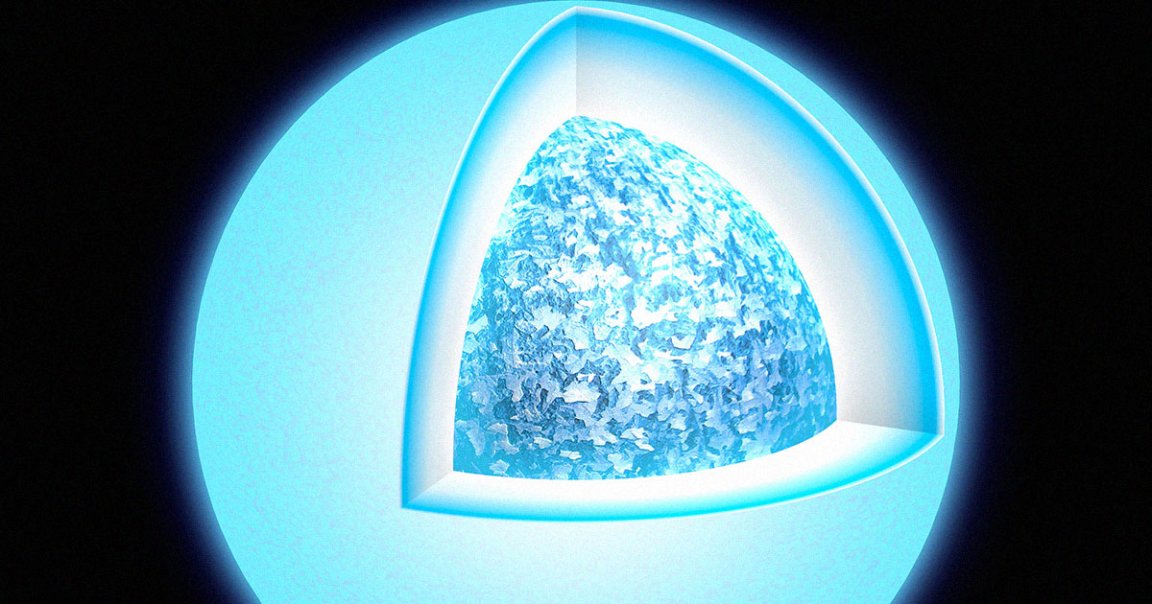
Bright Like a Diamond
Researchers are studying a white dwarf star about 104 light years away — practically in our cosmic backyard — that’s slowly crystallizing.
The star, with the ungainly name of HD 190412 C, appears to be in the initial stages of turning into what ScienceAlert is referring to as a “cosmic diamond.”
As detailed in a new paper accepted for publication in the journal Monthly Notices of the Royal Astronomical Society, researchers have been studying this particular star to further understand how the dead remains of certain stars harden into a dense core of crystallized carbon and oxygen.
But whether we’ll ever be able to see the cosmic bling with our own eyes is exceedingly unlikely. Scientists predict this process could take a quadrillion years — that’s a million billion years — while our entire universe is only an estimated 13.8 billion years young.
Diamond Anniversary
A white dwarf comes into being when a star whose mass is not big enough to become a black hole or neutron star reaches the point at which it runs out of fuel.
Looking at this white dwarf is like looking at the far future. Our Sun will become a white dwarf eventually when it runs out of fuel some six billion years from now.
A typical white dwarf is only slightly bigger than the Earth, yet half as massive as the Sun, making it extremely dense.
Scientists are interested in HD 190412 C in particular as it offers a unique opportunity to study the cooling process of white dwarves — and even how long it could take before it could crystallize into what could resemble a diamond.
By measuring its distance from Earth and studying its system’s other properties, scientists have, for the first time, been able to determine the white dwarf’s age and how far along it is in the crystallization process.
According to their calculations, it’s around 4.2 billion years old. As ScienceAlert points out, that figure alone won’t require us to reevaluate what we know about these types of stars.
But the researchers’ data suggests there could be plenty of other stars like it we could use to keep studying this fascinating crystallization process.
More on stars: The First Stars of the Universe Formed Masses as Bright as 100 Million Suns